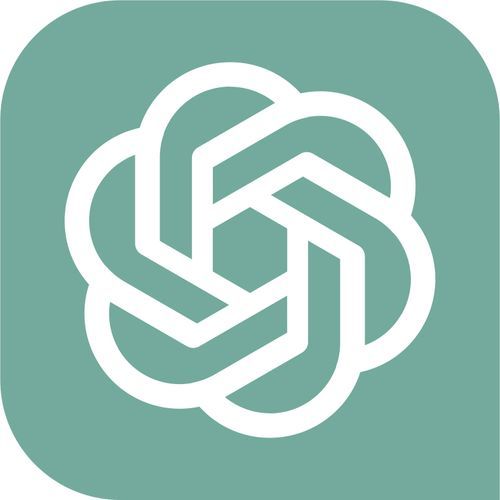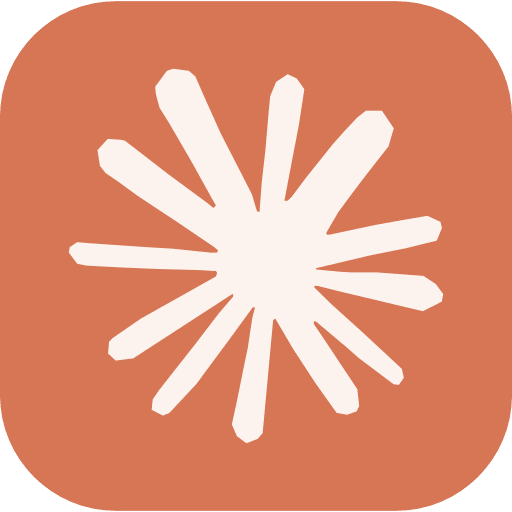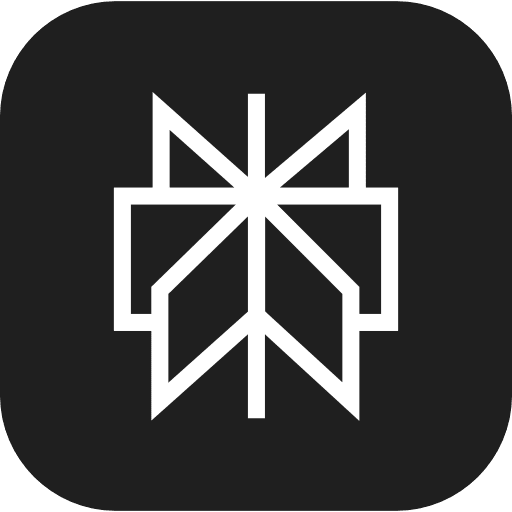Library of teambuilding games & icebreakers


Roulette questions
Quick, easy, engaging, and ideal for getting to know one another, Roulette Questions is an energizer/ice-breaker that’s sure to go down well before virtual meetings – especially for new teams.
Roulette questions
Quick, easy, engaging, and ideal for getting to know one another, Roulette Questions is an energizer/ice-breaker that’s sure to go down well before virtual meetings – especially for new teams.
How to play Roulette questions
The game involves using an online roulette wheel that’s full of different questions. Co-workers take turns “spinning” the wheel and answering whichever one they land on.
Simply work your way through the questions until there are none left (many roulette tools allow you to eliminate questions as you do, ensuring you never land on the same one twice) or until everyone has answered something!
Try playing with a time limit to inject more energy into the activity. For instance, depending on its size, you could challenge the team to get through the questions in 10 minutes or less. This should stop the game from dragging on too long and make it more enjoyable to boot.
Gallery



Video


Conflict scene analysis
The aim of this game is to boost your conflict resolution skills by diving into some video scenes that are bursting with workplace drama. We'll watch 'em, dissect 'em, and figure out the best ways to make things right. This is a hands-on, visual, and chatty way to boost your conflict resolution skills. Let's dive into those scenes, have some fun, and make our workplace a better, more harmonious space.
Conflict scene analysis
The aim of this game is to boost your conflict resolution skills by diving into some video scenes that are bursting with workplace drama. We'll watch 'em, dissect 'em, and figure out the best ways to make things right. This is a hands-on, visual, and chatty way to boost your conflict resolution skills. Let's dive into those scenes, have some fun, and make our workplace a better, more harmonious space.
Materials needed
You won't need much for this - just some video clips that showcase different conflict scenarios, a way to display them (a projector or screen), and something to jot down your thoughts.
Instructions
- First you need to choose your scenes. Think workplace disputes, customer service kerfuffles, or good ol' interpersonal clashes – scenes that you can totally relate to. Scenes from the movie Horrible Bosses or Steve Jobs could be perfect.
- After the video's done, it's your turn to chat. We'll dive deep into the conflict we just saw. What caused it? How did emotions play a part? And what about those communication styles?
- Split into groups or pairs and hand out some worksheets or notebooks. You'll use these to brainstorm your own ideas for smoothing out the situation. Remember, it's all about constructive conflict resolution.
- Let's regroup and share what we came up with. We want to hear all about your ideas and strategies. Feel free to speak up – there are no wrong answers here.
- We're not stopping at one video. Nope, we'll keep this party going with a bunch of different scenarios. Each one will have its own unique challenges and situations.
- After we've tackled all the videos, we'll gather 'round and talk about what we've learned. What were the big takeaways? Any recurring themes? And most importantly, how can we use all this newfound knowledge in our daily work lives?
Gallery



Video


Best and worst
This game relies on solid opinions, sure to get people talking. As the game's name implies, your team will get to know each other quickly, discussing the things they love and hate the most.
Best and worst
This game relies on solid opinions, sure to get people talking. As the game's name implies, your team will get to know each other quickly, discussing the things they love and hate the most.
How to play:
Team members go around and ask a question about the best thing they can learn from the group. After each participant's answer, they go to the next person who asks about the worst thing their team can talk about. That can be like, “what is the best meal you ever had.”
This continues until everyone has the chance to ask a question, and receive answer.
Materials you’ll need Just your team and a large seating area.
How many people: Small to large teams (8-25+ people)
Gallery



Video


Stop-Walk
Looking for a quick team-building activity to refine your group‘s listening skills before a meeting? Then Stop-Walk is the game for you!
Stop-Walk
Looking for a quick team-building activity to refine your group‘s listening skills before a meeting? Then Stop-Walk is the game for you!
Great for: Listening skills
Duration: 10 minutes
Players: 8+
You’ll need: Nothing
How to play Stop-Walk
Setup: Find a large room and delegate one person to be the “leader.”
To play: The game starts simply. The leader introduces two basic instructions: “stop” and “walk.” When the leader says “walk,” everybody starts walking around, and when he/she says “stop,” everybody stops. Then, the leader announces that the meanings of these phrases have now been reversed, so “stop” means “walk” and “walk” now means “stop.” Once the group has got to grips with these commands, the leader can slowly introduce new pairs of commands such as “clap” and “jump,” now and again reversing the meanings. Whenever somebody performs the wrong action, they are eliminated from the game.
Gallery



Video


Extreme rock, paper, scissors
Extreme rock, paper, scissors takes the traditional playground game to a new level. This time, Instead of battling it out in pairs, your employees will attempt to overthrow the competition in teams.
Extreme rock, paper, scissors
Extreme rock, paper, scissors takes the traditional playground game to a new level. This time, Instead of battling it out in pairs, your employees will attempt to overthrow the competition in teams.
Great for: Energization
Duration: 10 minutes
You’ll need: Plastic hula hoops (approx. 15)
How to play:
- Lay the hoops in a line on the ground and leave a gap of 50cm between each one.
- Divide your group into two teams and position them at either end of the line of hoops.
- When you shout “Go!” one player from each team starts hopping through the hoops towards the opposition.
- When they meet in the middle, they play rock, paper, scissors.
- The loser exits the hoop and jogs back to their team. Meanwhile, the winner continues hopping forward towards the opposition and a player from the other team steps in to replace their fallen comrade.
- When the two players meet, they play rock, paper, scissors again.
- Play continues until a player reaches the opposing team’s starting hoop. The first team to land in their opponent's starting hoop wins.
Gallery



Video


Focus funnel
One of the most important skills to be able to iterate and improve work is being able to focus on reflection. A Focus Funnel activity promotes these core values and lets teams work with an agile mindset, asking clinical questions as they go.
Focus funnel
One of the most important skills to be able to iterate and improve work is being able to focus on reflection. A Focus Funnel activity promotes these core values and lets teams work with an agile mindset, asking clinical questions as they go. Here’s the setup:
Set up:
Each team member first needs to clearly write a list of their current tasks and goals.
The focus funnel comes when applying a series of questions to help you narrow down and prioritize their list. Some example funneling questions could be:
a. “Which task delivers the most immediate value?”
b. “Which of these tasks can be delegated?”
c. “What can be simplified and removed?”
As the questions are applied your teams practice agile prioritization and bring high-value tasks to the forefront.
Gallery



Video


Virtual movie quiz
Test your team's movie knowledge with virtual movie quiz! Watch a short clip from a popular film, then answer trivia questions about specific details in the scene. It’s a fun way to foster attention to detail, spark discussions about shared movie favorites, and see who’s the ultimate film buff.Perfect for breaking up the workday with some friendly competition and movie talk.
Virtual movie quiz
Test your team's movie knowledge with virtual movie quiz! Watch a short clip from a popular film, then answer trivia questions about specific details in the scene. It’s a fun way to foster attention to detail, spark discussions about shared movie favorites, and see who’s the ultimate film buff.
Perfect for breaking up the workday with some friendly competition and movie talk.
How to play:
- Watch a short movie clip together as a team.
- Answer trivia questions about details in the scene (e.g., what color was the car?).
- The person with the most correct answers wins!
Gallery



Video


Movie poster design
Teams create a movie poster that represents their remote work experience using an online design tool like Canva. The poster can be as funny, creative, or wild as the team wants.For the hybrid version, remote workers and in-office teams collaborate to create a movie poster that captures the essence of remote or hybrid work life. Everyone can contribute ideas through online brainstorming, and both remote and in-office team members use design tools like Canva to put it all together. Maybe it’s a comedy about juggling work and life or an action-packed poster showcasing the chaos of virtual meetings. It’s a fun, collaborative way for employees to show off their creativity and storytelling skills.
Movie poster design
Explanation:
Teams create a movie poster that represents their remote work experience using an online design tool like Canva. The poster can be as funny, creative, or wild as the team wants.
For the hybrid version, remote workers and in-office teams collaborate to create a movie poster that captures the essence of remote or hybrid work life. Everyone can contribute ideas through online brainstorming, and both remote and in-office team members use design tools like Canva to put it all together. Maybe it’s a comedy about juggling work and life or an action-packed poster showcasing the chaos of virtual meetings. It’s a fun, collaborative way for employees to show off their creativity and storytelling skills.
Gallery



Video


Giant Connect Four
Giant Connect Four is a strategic and engaging game that promotes critical thinking, decision-making, and friendly competition. It encourages problem-solving skills and provides an opportunity for participants to interact and strategize with each other in a relaxed setting.
Giant Connect Four
How to play Giant Connect Four
Instructions: Set up a giant Connect Four board on a stand. Participants take turns dropping their colored discs into the slots, aiming to get four in a row horizontally, vertically, or diagonally. The player who achieves four in a row first wins.
Materials needed: Giant Connect Four board.
Giant Connect Four is a strategic and engaging game that promotes critical thinking, decision-making, and friendly competition. It encourages problem-solving skills and provides an opportunity for participants to interact and strategize with each other in a relaxed setting.
Gallery



Video


Heads up seven up
This is another childhood favorite for many, and bringing it into your workplace is sure to create a little nostalgia. It's a simple and fun way to get everyone more comfortable working together.
Heads up seven up
This is another childhood favorite for many, and bringing it into your workplace is sure to create a little nostalgia. It's a simple and fun way to get everyone more comfortable working together.
Here’s how you play:
- Have everyone sit down, either at a desk, on the floor, or wherever it makes sense (but everyone should be sitting). Everyone should close their eyes, put their heads down, and put their thumbs up.
- Seven players will go around the room and touch one person’s thumb apiece. Each chooser will select only one person, and they should do so as quietly and discreetly as possible. The goal is for the chosen people to guess who picked them, so the more secret, the better.
- Once all seven people have been picked, have everyone raise their heads and ask the seven chosen people to stand up. Now, they will guess who touched their thumb. Each person gets only one guess, and if they pick correctly, they will be one of the seven “choosers” in the next round.
- The game continues with the new seven people, including anyone who guessed correctly in the previous round. Ideally, everyone will get a chance to be one of the “pickers”.
Gallery



Video


Role reversal game
This game is all about understanding conflicts from different perspectives. We're going to act out conflict scenarios and then swap roles to see how the other side feels. It's like stepping into someone else's shoes, but without the actual shoe-swapping part! It's a great way to build empathy and gain fresh insights on how to overcome teamwork challenges in the workplace. Get ready to embrace different perspectives!
Role reversal game
How to play Role reversal
This game is all about understanding conflicts from different perspectives. We're going to act out conflict scenarios and then swap roles to see how the other side feels. It's like stepping into someone else's shoes, but without the actual shoe-swapping part! It's a great way to build empathy and gain fresh insights on how to overcome teamwork challenges in the workplace. Get ready to embrace different perspectives!
Gallery



Video


Spelling bee
The spelling bee is a great opportunity for the more introverted members of your workforce to display some raw talent. A host will need to make a list of words, with increasing difficulty. Try adding in ‘bonus’ rounds where spellers will need to spell the word backwards.
Spelling bee
The spelling bee is a great opportunity for the more introverted members of your workforce to display some raw talent.
How to play Spelling bee
A host will need to make a list of words, with increasing difficulty. Try adding in ‘bonus’ rounds where spellers will need to spell the word backwards.
Gallery



Video


What's in the Box?
Fill a box with random objects, such as office supplies, toys, or miscellaneous items. One participant selects an item from the box and describes how it can be repurposed or used creatively in a different context.
What's in the Box?
How to play:
Fill a box with random objects, such as office supplies, toys, or miscellaneous items. One participant selects an item from the box and describes how it can be repurposed or used creatively in a different context.
Materials needed: Box, various objects
Benefits:
- Creative problem-solving: Stimulate participants' ability to think creatively and find innovative uses for ordinary objects, fostering resourcefulness and adaptability.
- Divergent thinking: Encourage participants to explore multiple perspectives and consider alternative uses or functions for everyday items.
- Perspective shift: Develop the skill of looking beyond the obvious and seeing the potential in the ordinary, which can translate to finding innovative solutions in the workplace.
Gallery



Video


Flip and sip
Our next game involves drinking, so make adjustments according to the workday! There are a lot of videos for this game involving beer, but water and soda work just as well. The game works best with two teams facing each other on opposite sides of the table. The first member needs to successfully flip before the second member can go. It’s a race to the finish line!
Flip and sip
Our next game involves drinking, so make adjustments according to the workday! There are a lot of videos for this game involving beer, but water and soda work just as well. The game works best with two teams facing each other on opposite sides of the table. The first member needs to successfully flip before the second member can go. It’s a race to the finish line!
Set-up:
- Get your teams ready: Organize teams on either side of the table. In front of each player place a cup filled with any liquid (beer is optional!). Tell them the first player needs to down the liquid, then successfully flip their empty cup from the edge of the table, so that it lands upside-down.
- Get flipping crazy!: Let the two players face-off. Once a team member lands a perfect flip, the next teammate downs their drink and races to do the same. Continue with each team member until the last player flips their cup at the finish line.
You’ll likely be creating a bit of a chaotic mess with this one, so whatever you choose as your drink, make sure it’s easy to clean up, and it doesn’t affect your work performance!
Gallery



Video


Lunchtime picnic
Lunch breaks present an excellent team-bonding opportunity that many managers fail to capitalise on. By organising regular lunchtime picnics, you encourage your employees to spend time getting to know each other outside of the office.
Lunchtime picnic
Lunch breaks present an excellent team-bonding opportunity that many managers fail to capitalise on. By organising regular lunchtime picnics, you encourage your employees to spend time getting to know each other outside of the office.
Great for: Interpersonal bonding, well-being
Duration: 30 minutes
You’ll need: N/A
How to organise:
- Outdoor company picnics are, of course, weather dependent, so look at the forecast at the start of the week and determine the best day and location for a picnic.
- Mark the chosen day on the calendar in the staff room or send a group email to notify your team.
- On the day of the picnic, provide essential items such as blankets, picnic baskets, sunscreen etc.
Gallery



Video


Around the horn
About as simple and traditional as it gets, this icebreaker involves a facilitator simply asking everyone to introduce themselves to the group. Keep things concise by asking everyone to share their name, role, region, and maybe one fun fact or otherwise light-hearted bit of information. Some people have people state what they are excited to learn in the session or what is most on their minds, work-wise.
Around the horn
How to play Around the horn
About as simple and traditional as it gets, this icebreaker involves a facilitator simply asking everyone to introduce themselves to the group. Keep things concise by asking everyone to share their name, role, region, and maybe one fun fact or otherwise light-hearted bit of information. Some people have people state what they are excited to learn in the session or what is most on their minds, work-wise.
Gallery



Video


Pitch tournament
An important part of selling is understanding customer needs: what they want or what drives them to buy something. Help your team to hone these skills by pitching items to you or another panel of judges. Pick a few regular objects, such as things from around the office. Then, pair people up (or work as individuals if your group is already small) and have them take turns pitching the item to your judges. Give everyone a few minutes to come up with a unique presentation and make sure they understand the product. Add a prize for the winner to up the ante a bit.
Pitch tournament
How to play Pitch tournament
An important part of selling is understanding customer needs: what they want or what drives them to buy something. Help your team to hone these skills by pitching items to you or another panel of judges. Pick a few regular objects, such as things from around the office. Then, pair people up (or work as individuals if your group is already small) and have them take turns pitching the item to your judges. Give everyone a few minutes to come up with a unique presentation and make sure they understand the product. Add a prize for the winner to up the ante a bit.
Gallery



Video


‘Welcome to my crib...‘
Who are we kidding? Everybody knows that working from home includes barking dogs, screaming children and make-shift offices. This activity is designed to discover the ‘working environment’ of your colleagues. Colleagues will take it in turns to give a short tour of their house, showing where they work, where they go for lunch, etc. This builds more human connections between employees.
‘Welcome to my crib...‘
Who are we kidding? Everybody knows that working from home includes barking dogs, screaming children and make-shift offices. This activity is designed to discover the ‘working environment’ of your colleagues.
How to play ‘Welcome to my crib...‘
Colleagues will take it in turns to give a short tour of their house, showing where they work, where they go for lunch, etc. This builds more human connections between employees.
Gallery



Video


Show your phone
A very simple and easy icebreaker involves asking everyone to share the latest “something” on their phone. The “something” could be their most recent photo, or the last app they had open. As long as it’s work appropriate, you can get creative about what you’ll ask people to show. A popular take on this game is to share the last 3 emojis you used, but you can get as creative as you feel comfortable. For a super fast and effective icebreaker, have each person stand up, introduce themselves, and share this tidbit of information based on your prompt.
Show your phone
How to play Show your phone
A very simple and easy icebreaker involves asking everyone to share the latest “something” on their phone. The “something” could be their most recent photo, or the last app they had open. As long as it’s work appropriate, you can get creative about what you’ll ask people to show. A popular take on this game is to share the last 3 emojis you used, but you can get as creative as you feel comfortable. For a super fast and effective icebreaker, have each person stand up, introduce themselves, and share this tidbit of information based on your prompt.
Gallery



Video


Watermelon Eating Contest
The Watermelon Eating Contest is a fun and delicious game that promotes friendly competition and brings out the laughter. It adds a lighthearted and entertaining element to the picnic while allowing team members to bond over a shared experience.
Watermelon Eating Contest
How to play Watermelon Eating Contest
Instructions: Provide each participant with a slice of watermelon. The objective is to eat the watermelon slice as quickly as possible without using hands. The first person to finish their slice wins.
Materials needed: Watermelon slices.
The Watermelon Eating Contest is a fun and delicious game that promotes friendly competition and brings out the laughter. It adds a lighthearted and entertaining element to the picnic while allowing team members to bond over a shared experience.
Gallery



Video


Treasure mountain
Treasure Mountain can be played with teams of 4-6 people, a team captain is chosen to enter the game and share his/her screen with the rest of their team. The teams then race against the clock, completing challenges and solving riddles in the pursuit of gold.
Treasure mountain
How to play Treasure mountain
Treasure Mountain can be played with teams of 4-6 people, a team captain is chosen to enter the game and share his/her screen with the rest of their team. The teams then race against the clock, completing challenges and solving riddles in the pursuit of gold.
Gallery



Video


Speed Goal Sharing
Ever feel like time is running faster than you can list your goals? Well, brace yourself for the whirlwind excitement of Speed Goal Sharing! Participants team up, and they've got a mere minute to spill the beans on their current goals to a partner. It's like goal-setting on fast-forward. Why? Because sometimes, brevity is the key. This quick teambuilding activity isn't just a time crunch; it's a crash course in concise communication and prioritization. So, get ready to share your aspirations at lightning speed – clarity and alignment within the team await! Top Tip for Facilitators: Keep the vibe upbeat and the clock ticking. Encourage everyone to channel their inner auctioneer – goals on the fly, people! Guide the conversations to make sure it's not just a blur of words but a meaningful exchange. This activity is like a goal-driven race, so set the pace, cheer them on, and let the concise communication marathon begin!
Speed Goal Sharing
Ever feel like time is running faster than you can list your goals? Well, brace yourself for the whirlwind excitement of Speed Goal Sharing! Participants team up, and they've got a mere minute to spill the beans on their current goals to a partner. It's like goal-setting on fast-forward. Why? Because sometimes, brevity is the key.
This quick teambuilding activity isn't just a time crunch; it's a crash course in concise communication and prioritization. So, get ready to share your aspirations at lightning speed – clarity and alignment within the team await!
Top Tip for Facilitators:
- Keep the vibe upbeat and the clock ticking. Encourage everyone to channel their inner auctioneer – goals on the fly, people!
- Guide the conversations to make sure it's not just a blur of words but a meaningful exchange.
- This activity is like a goal-driven race, so set the pace, cheer them on, and let the concise communication marathon begin!
Gallery



Video


Restaurant pricing
“Price” is one of the four Ps of marketing, but is an often overlooked element. An exercise that helps your team to come up with a pricing strategy and see how it impacts overall revenue can be really helpful. This game takes about 45 minutes and you’ll need someone who is an Excel whiz to document the numbers portion. To begin, come up with a menu of items for your “restaurant”. You’ll also need an Excel or Google Sheet that has rows for each item, and columns to place cost of goods, price, number sold, and margin. The goal of your group is to come up with pricing for each item that nets a great profit. However, they need to be realistic about things like the cost to make each item and how many people will buy it. If the price gets too high, they should plan to have less customers. This can start a great conversation on pricing strategy overall. How high does the price need to be before customers turn away? How low can you keep prices while still getting a decent margin? Using a template that has formulas built in means your team can just plug in different numbers to come up with several scenarios. This is a great way to drive home the point that even small price changes can make a big difference on the bottom line.
Restaurant pricing
How to play Restaurant pricing
“Price” is one of the four Ps of marketing, but is an often overlooked element. An exercise that helps your team to come up with a pricing strategy and see how it impacts overall revenue can be really helpful. This game takes about 45 minutes and you’ll need someone who is an Excel whiz to document the numbers portion. To begin, come up with a menu of items for your “restaurant”. You’ll also need an Excel or Google Sheet that has rows for each item, and columns to place cost of goods, price, number sold, and margin.
The goal of your group is to come up with pricing for each item that nets a great profit. However, they need to be realistic about things like the cost to make each item and how many people will buy it. If the price gets too high, they should plan to have less customers. This can start a great conversation on pricing strategy overall. How high does the price need to be before customers turn away? How low can you keep prices while still getting a decent margin? Using a template that has formulas built in means your team can just plug in different numbers to come up with several scenarios. This is a great way to drive home the point that even small price changes can make a big difference on the bottom line.
Gallery



Video


Match quest
In match quest, everyone has the name of a famous pair (like “Batman” and “Robin”) stuck to their back, but they don’t know who they are. Players ask each other yes/no questions to figure out their identity and find their match. It’s a race to see who can complete their pair first!This game is perfect for encouraging interaction and getting people mingling. It’s a lighthearted, playful way to break the ice and get the team laughing together, making it ideal for building connections.
Match quest
In match quest, everyone has the name of a famous pair (like “Batman” and “Robin”) stuck to their back, but they don’t know who they are. Players ask each other yes/no questions to figure out their identity and find their match. It’s a race to see who can complete their pair first!
This game is perfect for encouraging interaction and getting people mingling. It’s a lighthearted, playful way to break the ice and get the team laughing together, making it ideal for building connections.
How to play:
- Write the names of famous pairs on cards and stick one to each player’s back.
- Players ask yes/no questions to figure out who they are.
- The goal is to find your match as quickly as possible.
Gallery



Video

















